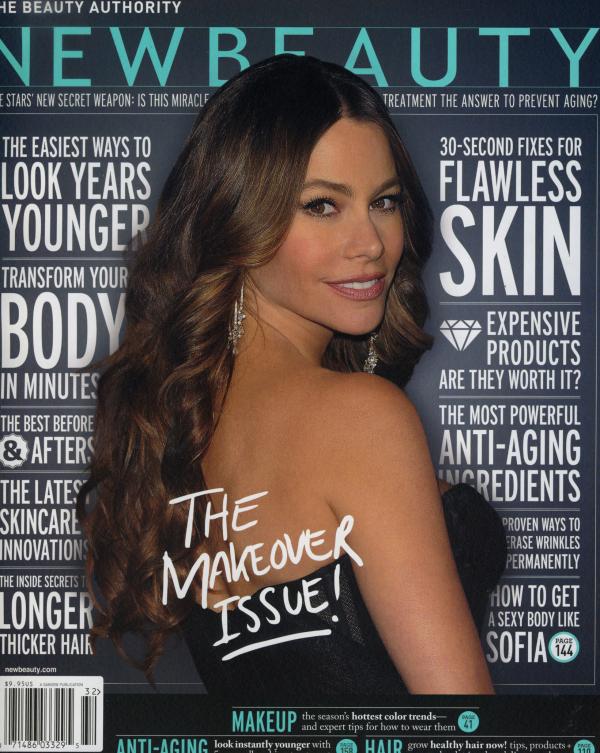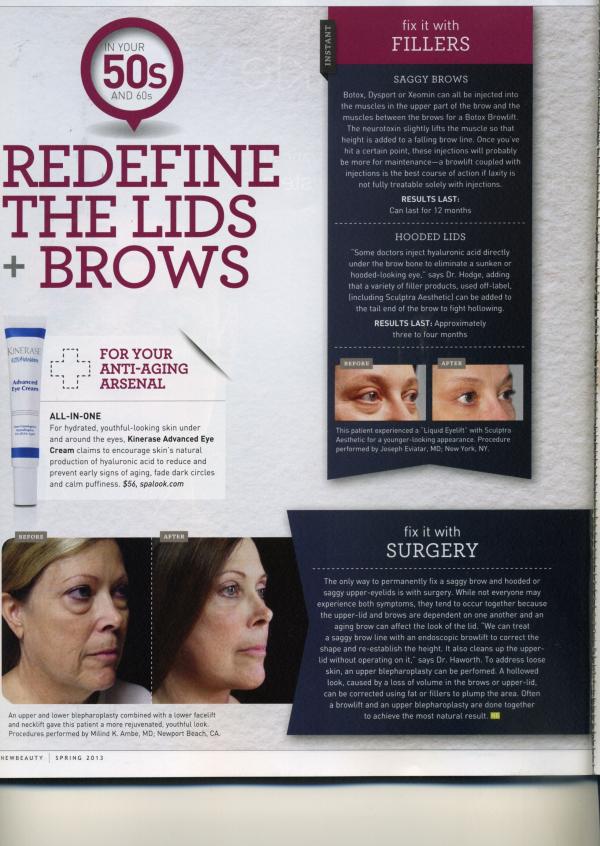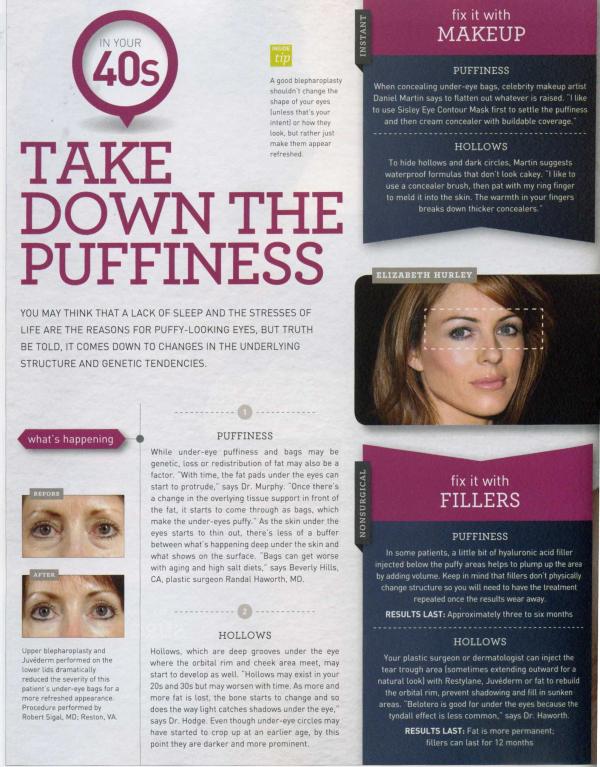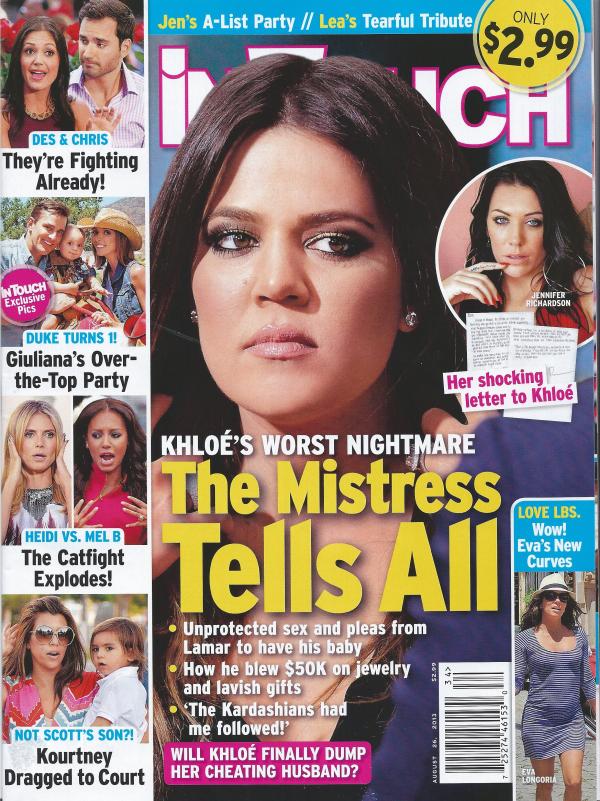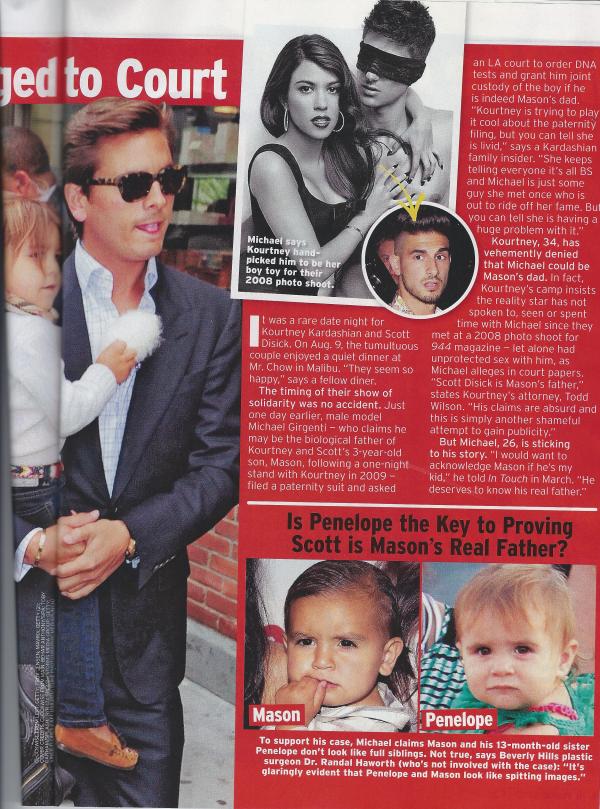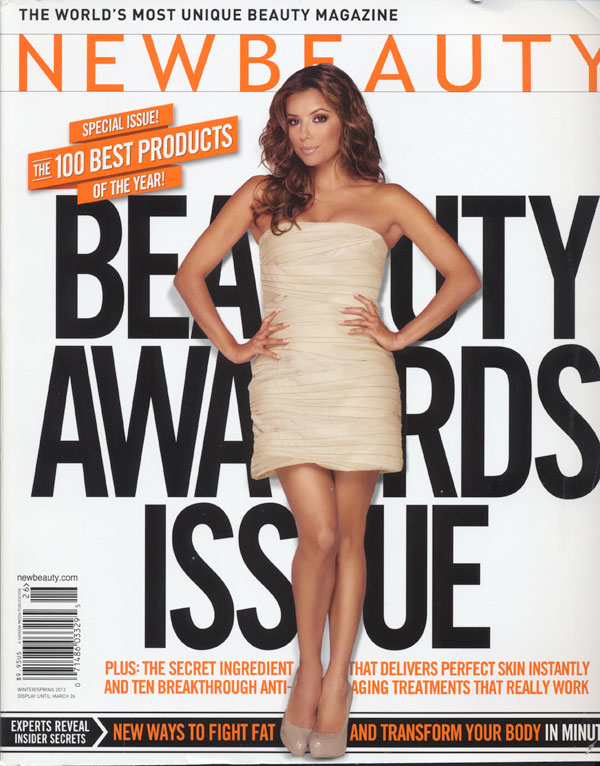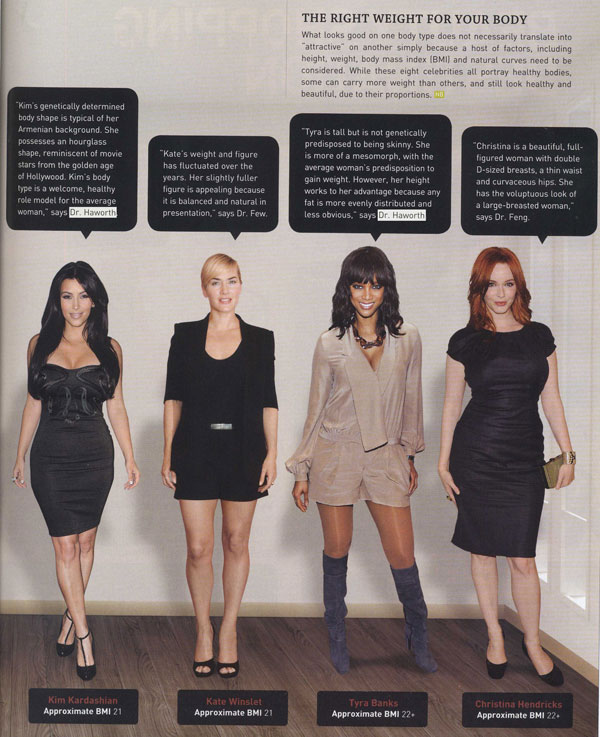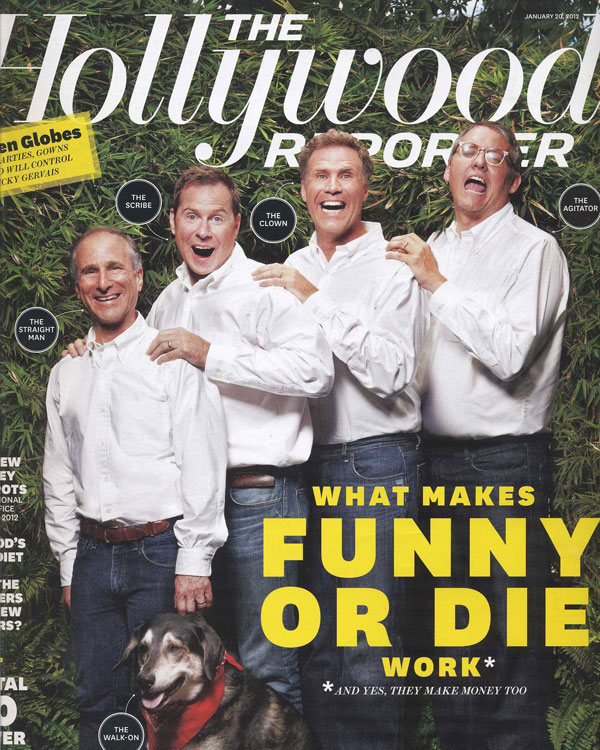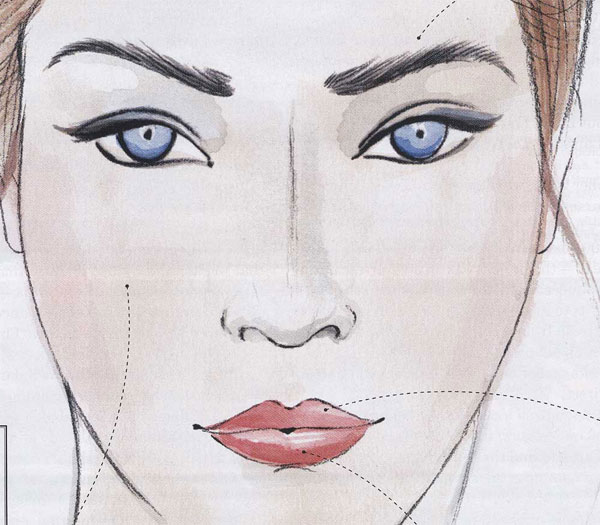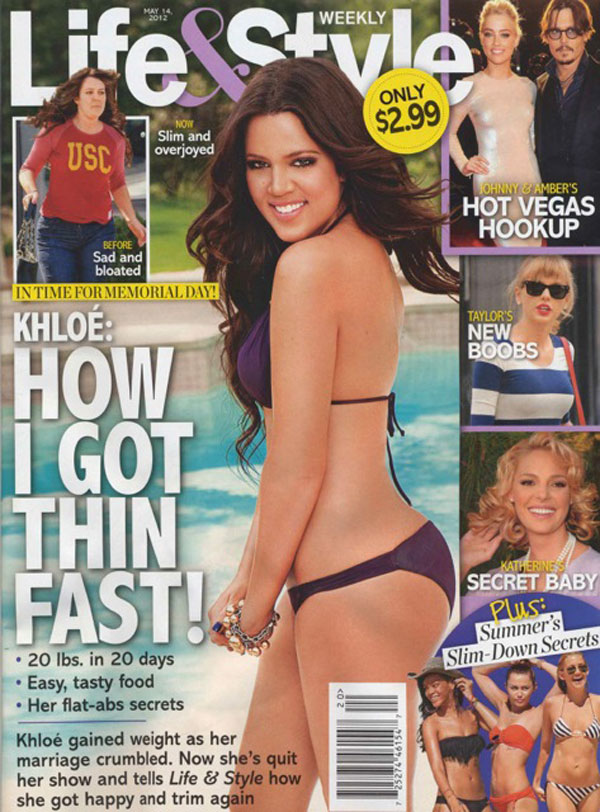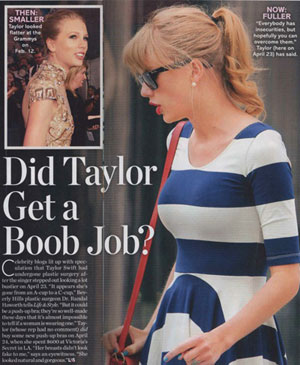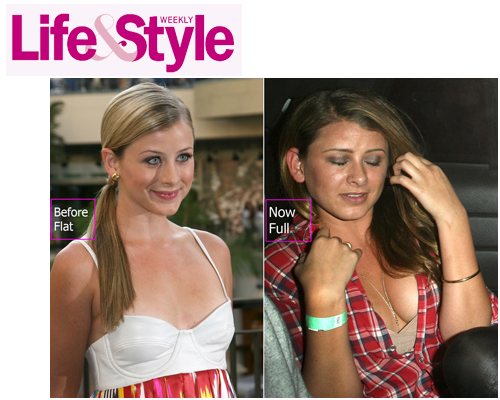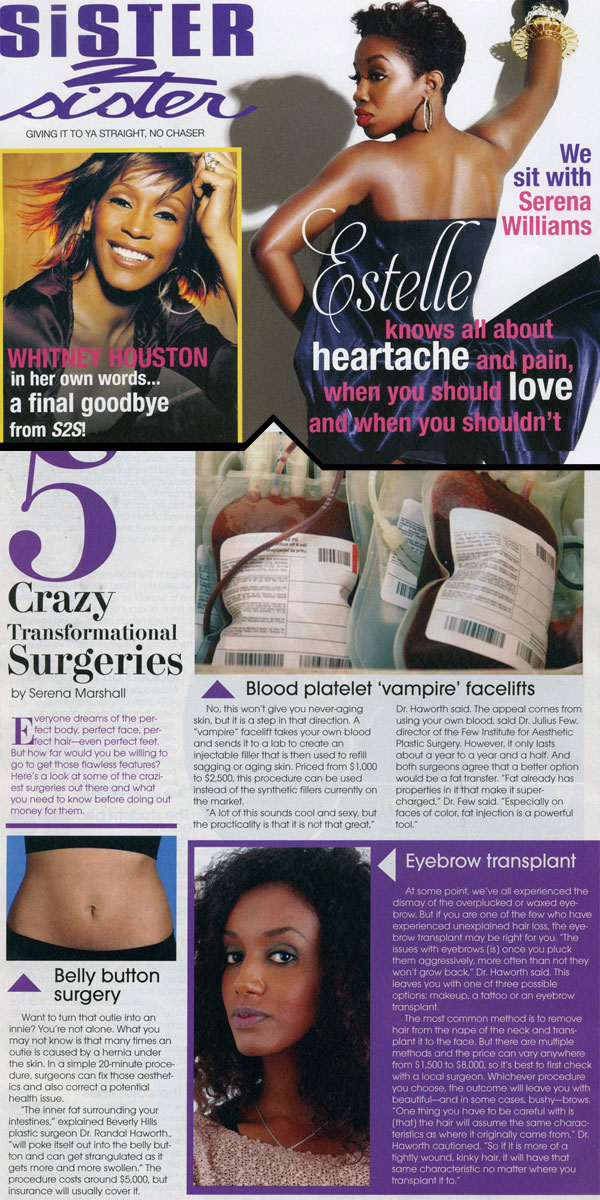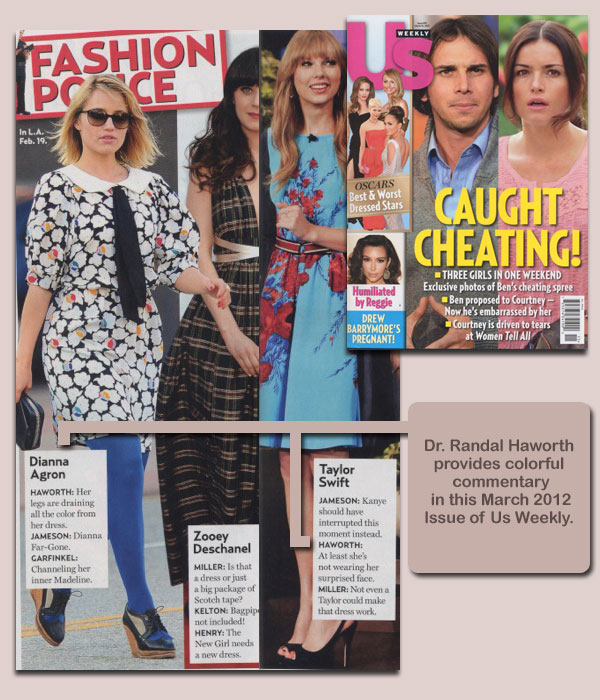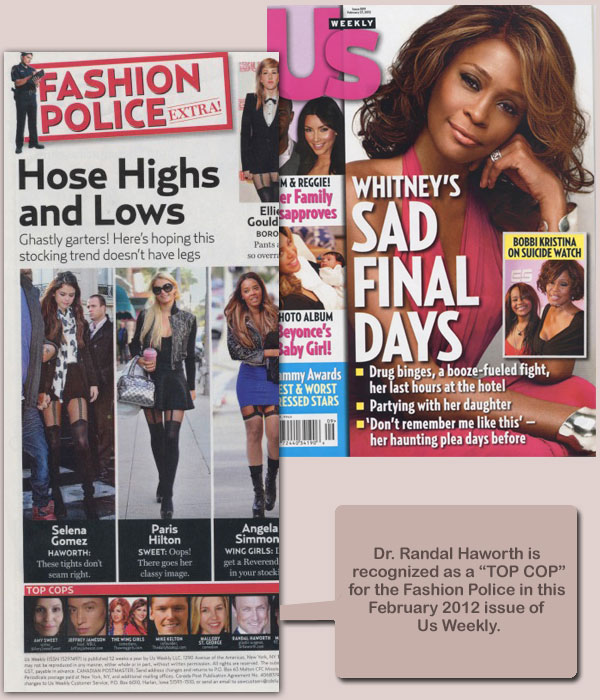Let us introduce you to L.A. resident Dr. Randal Haworth. While primarily a plastic surgeon known amongst his peers for innovations in the field, he’s also an artist. Dr. Haworth began by hand-drawing medical illustrations and then crossed over into fine art in 2000. His current series “Iconography” has been called “anti-pop realism” by art critic Peter Frank who said Dr. Haworth’s art “synthesizes classic style with Pop Surrealism.”
If you don’t know him for his art, you might know him from his time on Fox’s reality show The Swan, which focused on giving people extreme makeovers, or from his numerous quotes in popular magazines like Life & Style, US Weekly, or Cosmopolitan where he is called on time and time again for his expertise.
When did you know medicine was the path for you? Was it something you always dreamed about as a small child or did it come up later in life?
As an only child, my family really wanted me to be a doctor but my DNA steered me in a more creative route since I excelled in art. As a kid living in England, I saw this BBC program featuring a plastic surgeon and it really stuck with me. At 13, I realized if I was going to be a doctor, it was going to be a plastic surgeon. Plastic surgery embodies a good synthesis of art and science. It really bridges both worlds.
How did you decide to go into plastic surgery?
Same reason, but I took a longer, more arduous route to get where I am. I started in general surgery at Cornell where I treated gunshot wounds, cancer patients, trauma victims, etc. Then I crossed a bridge into plastics when I applied and studied at UCLA.
What are some of the challenges you encounter on daily basis?
I’m kind of in a bizarre field if you think about it. I make healthy people temporarily unwell, while creating and controlling a scar; manipulating tissues so it heals in a way that make the patient more beautiful. The whole process constantly amazes me. So to answer your question, the most challenging aspect is the patient. Being able to figure out who is getting surgery for the right reasons is never easy. My goal is to make them happy, period. So, if I missed their expectation, whether it was reasonable or not, I have failed.
I have to figure out who they are and determine whether their unhappiness is more deeply rooted.
What were some of the joys and challenges of participating on a reality TV show?
The entire experience was exciting and different. Don’t get me wrong, it was very hard work. I still had to run my practice full time while doing the show, and The Haworth Institute was completely booked throughout the weekends.
For the show, we always did two separate surgical sessions for safety reasons. We did the facial surgeries first, and everything always took a tremendous amount of coordination.
At the time, the show was extremely controversial. The naysayers proclaimed that it was exploitation. However, I found that it was a very emotional experience. These people got the chance to change their lives and they were very appreciative. Their tears brought tears to everyone on staff, myself included.
Tell us a bit about your artwork. How did you get into art, and what media do you work in?
I have always been interested in art- both creating and collecting. My first show “Memories Lost” was at the BGH Gallery/Bergamot Station in Santa Monica. This body of work comprised photorealistic graphite drawings of missing children and adults. My next series was entitled “Icongraphy” and focused upon modern culture through anachronistic figurative images rendered in acrylic on canvas.
A preview of “Icongraphy” was staged at The James Gray Gallery in Santa Monica and the official showing was at the prestigious Karen Lynne Gallery in Beverly Hills. “Icongraphy” was a tongue and cheek play on society about the vapid culture and consumerism. The paintings were from olden times manipulated with modern features.
My next series is more authentic. As a plastic surgeon, people think I shouldn’t be taken seriously as an artist. That doesn’t stop me because I’m going to do something that I’ve always dreamed of. I’m taking super-close photos of surgical scenes and blowing them up. I will then use the image as the inspiration as I paint it so closely that the audience won’t know exactly what they are looking at.
It will be vaguely unsettling since it has no perspective.
Do you feel your artwork has evolved with the evolution of your profession as a plastic surgeon?
Good question, I have become a better plastic surgeon after painting because it has really allowed me to appreciate minute things. It’s a good lesson for me to be able to appreciate the super subtle details like a little shadow on the corner of a mouth. For me, painting really upped the ante, even though I never had any formal painting training.
There are many talented artists, many more talented than me, but being a plastic surgeon, in terms of tweaking the human form, helped me tremendously.
We are familiar with your Icongraphy series. How did this series come to be?
I simply wanted to paint! I saw what was happening in the world, and was influenced by lowbrow art. Icongraphy was in a sense an internal dialogue with myself. The paintings all had messages.
Do you sense a shift in your artwork is on the horizon or are you not done with Icongraphy?
I think I made a statement with Icongraphy, but as for right now I’m done with it. I may return back eventually, but I want to test the waters of other genres. I’m turning my focus on abstract ways of communication.
What’s up next for you?
My interests are with abstract and realism at the moment. I’m inspired by Glenn Brown and the various artists from Romania. As for plastic surgery goes, it is an evolution and not a real seismic shift. I’m going to continue to do what I’m doing, and incorporating the latest technology into my business. It takes a while make sure it is worth investing in or not since a lot of new technology is rubbish.
Plastic surgery is a bizarre field!
Where are you from originally and what was the transition like to Los Angeles?
I have moved away and back to Los Angeles three separate times. I was born here but went to boarding school in England until I was 17. Having lived in San Francisco and New York City as well, it definitely took awhile to get accustomed back to L.A. due to the difference in East coast vs. West coast attitude.
In New York, people are much more forward with their opinions, which I personally enjoy because I think ultimate politeness involves truth. In L.A. you never know if people are just being polite, or actually authentic.
What is the prevailing attitude surrounding plastic surgery in Los Angeles? Are there any unresolved social stigmas people need to be wary of when considering going under the knife?
I think it is still evolving, but Los Angeles is a lot more open when it comes to plastic surgery. People openly talk about surgery, and as a result, it holds surgeons to a higher standard.
Since clients discuss who did their nose, boobs, etc, the surgeon’s work is under extreme scrutiny. As opposed to the more private East coast, Los Angelos are not ashamed to have had work done.
Plastic surgery is still an aesthetic field, so the social stigma is basically not to look fake. In a town where appearance means everything, the stigma is not looking good. So many of my clients come to me because they want their change to look natural. They don’t want anyone to notice that they got plastic surgery, but they want people to notice they are better looking.
I always tell them “Everyone will notice, but not everyone will know.”
There are many things to love and loathe about L.A.; what are your favourite and least favourite aspects?
Love: The places that remind me of the long, bygone era of Hollywood in its golden years- The 20’s, 30’s, and even 40’s. It was a unique time with a unique look and feel that no other city in the world can mimic. Places such as Greystone mansion, Los Feliz, Silverlake, and the Spanish Moorish-inspired houses have distinctive, glamorous qualities to them.
I also love the sense of freedom you get when driving with the top down in the car. The weather is unparalleled.
Loathe: Parts of L.A. are ugly from an aesthetic standpoint with the endless sprawling suburban neighborhoods. L.A. also attracts the best and worst of people. The hard part is circumventing the treacherous waters of figuring out who your true friends are.
Everybody needs great pizza. Where do you go when you want to indulge in a slice?
Mozza Pizzeria on Melrose is this pizza shop with the same owners of the high-end Italian place next to it. It’s phenomenal.
L.A. is replete with some amazing art galleries. Do you have any recommendations?
As a collector, I recommend the Hammer and the Robert Berman Gallery at Bergamot Station. I am on the acquisition committee for the MOCA, so I appreciate that L.A. is the epicenter of art; I think the local galleries’ quality reflects that.
There are three other amazing galleries in Culver City worth noting: Blum and Poe, Cherry and Martin, and Mihai Nicodim.
What keeps you in L.A.?
My job and my friends keep me here. I think it’s an exciting time to be in L.A. as it is becoming more and more multicultural. There’s a Chinese proverb, “May you live in interesting times” and L.A. is certainly interesting.
How would you describe L.A. in one word?
Unpredictable
Click here to view The Metro Seeker’s full article on Dr Haworth.
Click here to view Dr. Haworth’s artwork.
